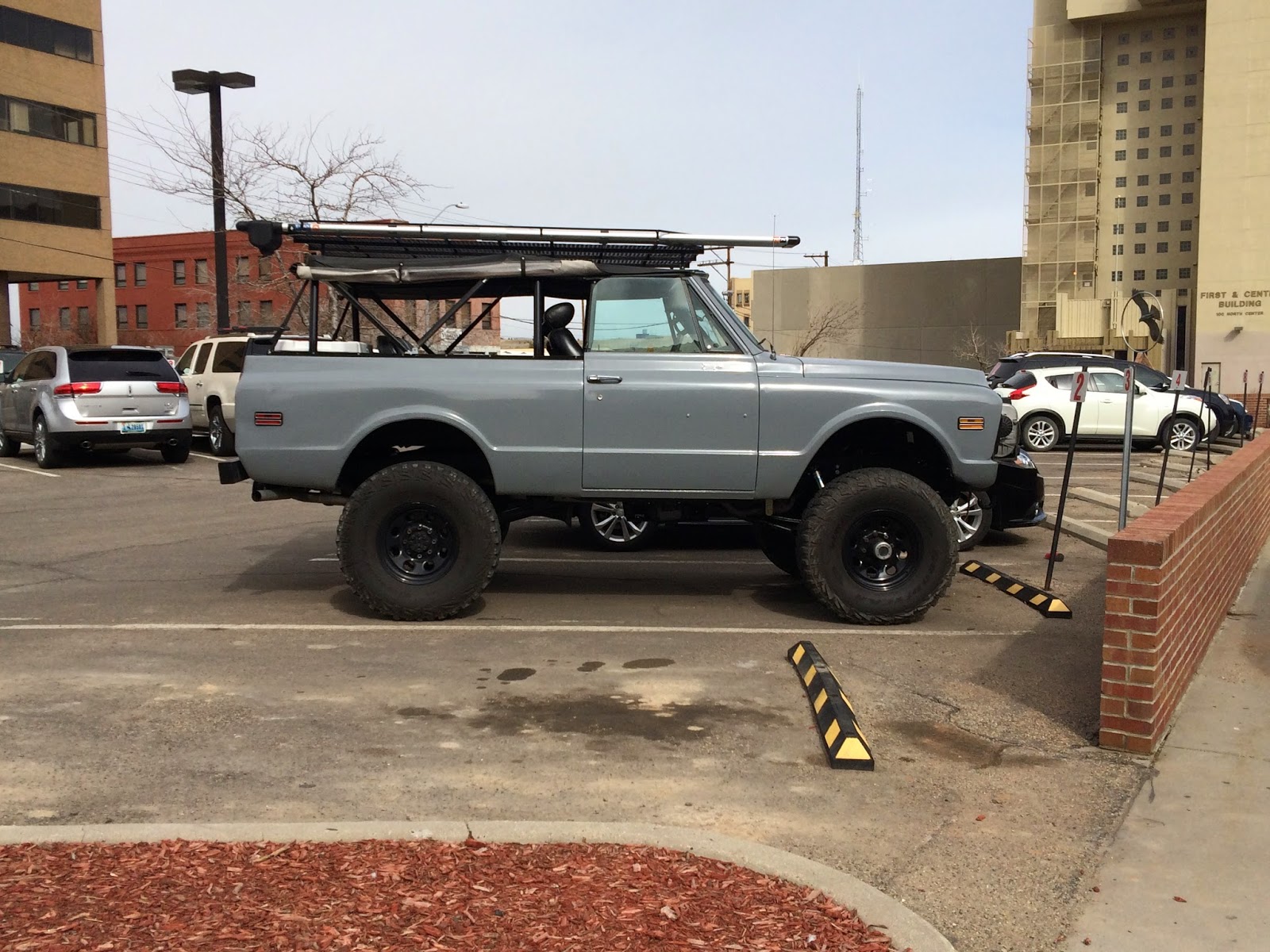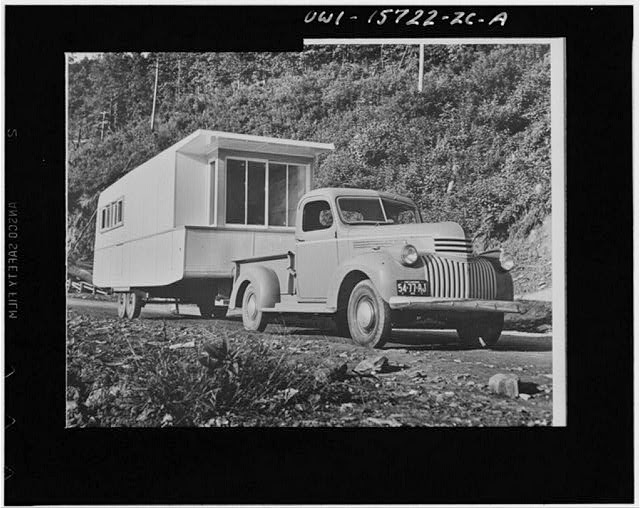Tuesday, May 30, 2023
Wednesday, May 24, 2023
Sunday, May 21, 2023
Unimog
I don't know the vintage of this Unimog, which is another photo I originally posted elsewhere, but its a nice example of one.
The Mercedes Unimog is a great truck, one of the all-time classic trucks, really. Somewhat analogous to the Dodge Power Wagon, it was originally intended as a post World War Two farm truck designed to allow German farmers to have one vehicle that could do anything, from plowing to taking crops to market. It's arguably the greatest series of 4x4s every made. They've seen widespread military and industrial use.
Friday, May 19, 2023
Thursday, May 18, 2023
Chevrolet Panel Truck
Posted elsewhere some time ago, a beautifully restored Chevrolet panel truck.
Chevrolet Panel Truck
Wednesday, May 17, 2023
Tuesday, May 16, 2023
Lex Anteinternet: The Rise and Decline of the "SUV".
The Rise and Decline of the "SUV".
Lex Anteinternet: SUVs before SUVs:
A 1962 Dodge Power Giant Carryall. Not mine, I saw it for sale the other day while driving through town. It appears in nice shape, and still features bias ply tires. This is a D100 Carryall, which means its rated at 1/2 ton, although it has a two speed rear axle. Of course, I don't know anything about it or what is, or isn't original. It looks pretty original, however.
Anyhow, it's interesting how SUVs are supposed to be a modern concept, with the Chevrolet Suburban supposedly sort of ushering them in. But Suburban's themselves go way back, and before them were vehicles like this Dodge Carryall. Carryalls, in fact, go all the way back to World War Two.
Of course, these aren't easy to drive. It has a manual transmission and armstrong steering. And, of course, conventional hydraulic brakes. Not something a soccer mom, or dad, would probably drive. Still, it's interesting to note how far back the concept of a full sized 4x4, built on a truck frame, goes. About as far back as 4x4 trucks themselves.

Jeep
I've owned Jeeps twice. My first car, a 1958 M38A1 Army Jeep. In the words of Iris Dement, "it turned over once, but never went far."*My very first vehicle was a Jeep. I bought it for $500 with money I had earned from a summer job. I was 15 at the time, and not old enough to actually drive, but I still had it when I turned 16.The engine was a mess, in need of rebuilding or replacement, and as you can see, the prior owner had hit a tree with it. As the engine was so worn out, it burned nearly as much oil as gasoline, and I sold it when I was 16 and bought a Ford F100 to replace it.My second Jeep was a 1946 CJ2A, the very first model of civilian Jeep. I kept it for awhile, but ultimately when my son was small, I sold it too. The CJ2A, particularly ones made in the first couple of years of production, was nearly unchanged from the World War Two Army 1/4 ton truck that gave rise to the species, and indeed, the model I had, had some parts commonality otherwise unique to the Army Jeeps of the Second World War.Depiction of Jeep in use on Guadalcanal, bringing in a KIA.Jeeps got their start in that role, as a military vehicle, a 1/4 ton truck, entering service just prior to World War Two. Bantam, a now extinct motor vehicle manufacturer, gets a lot of credit for the basic design, and indeed the Bantam Jeep did enter U.S. and British service.Bantam Jeep being serviced by Army mechanic. The Bantam was actually lighter than the Willys Jeep.But it was Willys, with larger manufacturing capacity, that really gets credit for the design. It was their design that became the Jeep, although Ford made a huge number of Jeeps during the Second World War as well.Coast Guard patrol with Jeep. The Coast Guard also had mounted patrols during the Second World War, acquiring horses and tack from the Army.American and Australian troops with Jeep serving as a field ambulance.Jeeps became synonymous with U.S. troops during World War Two. Indeed, there's a story, probably just a fable, of a French sentry shooting a party of Germans who tried to pass themselves off as Americans, simply because the sentry knew that a walking party of men could not be Americans, they "came in Jeeps." A story, probably, but one that reflected how common Jeeps were and how much they were admired by U.S. forces at the time. It's commonly claimed by some that Jeeps replaced the horse in the U.S. Army, but that's only slightly true, and only in a very limited sense. It might be more accurate to say that the Jeep replaced the mule and the horse in a limited role, but it was really the American 6x6 truck that did the heavy lifting of the war, and which was truly a revolutionary weapon.None the less, the fame of the Jeep was won, and after the war Jeeps went right into civilian production. For a time, Willys was confused over what the market would be for the little (uncomfortable) car, and marketed to farmers and rural workers, who never really saw the utility of the vehicle over other options. Indeed, for farmers and ranchers who needed a 4x4, it was really the Dodge Power Wagon that took off. The market for Jeeps was with civilian outdoorsmen, who rapidly adopted it in spite of the fact that it's very small, quite uncomfortable, and actually, in its original form, a very dangerous vehicle prone to rolling. Still, the light truck's 4x4 utility allowed sportsmen to go places all year around that earlier civilian cars and trucks simply did not. The back country, and certain seasons of the year, were suddenly opened up to them. For that reason, Jeeps were an integral part of the Revolution In Rural Transportation we've otherwise written about. You can't really keep a horse and a pack mule in your backyard in town, but you can keep a Jeep out on the driveway.Not surprisingly, Willys (and its successor in the line, Kaiser) soon had a lot of competition in the field. The British entered it nearly immediately with the Land Rover, a light 4x4 designed for the British army originally that's gone on to have a cult following, in spite of being expensive and, at least early on, prone to the faults of British vehicles. Nissan entered the field with the Nissan Patrol, a vehicle featuring the British boxiness but already demonstrating the fine traits that Japanese vehicles would come to be known for. Toyota entered the field with its legendary Land Cruiser, the stretched version of which I once owned one of, and which was an absolutely great 4x4. Indeed, their smaller Jeep sized vehicle, in my opinion, was the best in this vehicle class. Ford even entered the field with the original Bronco. Over time, even Suzuki would introduce its diminutive Samurai.So, what's happened here to this class of vehicles anyway?Recently, for reason that are hard to discern, I decided to start looking once again for a vehicle in this class. I know their defects. They are unstable compared to trucks, and they don't carry much either. But there is something about them. Last time I looked around there were a lot of options, and costs were reasonable for a used one. Well, not anymore.I don't know if its the urbanized SUV that's taken over everything. But whereas once a fellow looking for a Jeep like vehicle could look for Jeeps, Land Cruisers, Land Rovers, Samurais, Broncos and International Scouts, now you are down to Jeeps, the Toyota FJ Cruiser or the soon to be extinct Land Rover Defender. The Defender is insanely expensive, but the Jeep and Cruiser sure aren't cheap. Even used vehicles in this class now command a crazy price. I'm actually amazed I see so many around, given that most people don't use them for what they are designed for, and they're so darned expensive.
My first car, a 1958 M38A1 Army Jeep. In the words of Iris Dement, "it turned over once, but never went far."*My very first vehicle was a Jeep. I bought it for $500 with money I had earned from a summer job. I was 15 at the time, and not old enough to actually drive, but I still had it when I turned 16.The engine was a mess, in need of rebuilding or replacement, and as you can see, the prior owner had hit a tree with it. As the engine was so worn out, it burned nearly as much oil as gasoline, and I sold it when I was 16 and bought a Ford F100 to replace it.My second Jeep was a 1946 CJ2A, the very first model of civilian Jeep. I kept it for awhile, but ultimately when my son was small, I sold it too. The CJ2A, particularly ones made in the first couple of years of production, was nearly unchanged from the World War Two Army 1/4 ton truck that gave rise to the species, and indeed, the model I had, had some parts commonality otherwise unique to the Army Jeeps of the Second World War.Depiction of Jeep in use on Guadalcanal, bringing in a KIA.Jeeps got their start in that role, as a military vehicle, a 1/4 ton truck, entering service just prior to World War Two. Bantam, a now extinct motor vehicle manufacturer, gets a lot of credit for the basic design, and indeed the Bantam Jeep did enter U.S. and British service.Bantam Jeep being serviced by Army mechanic. The Bantam was actually lighter than the Willys Jeep.But it was Willys, with larger manufacturing capacity, that really gets credit for the design. It was their design that became the Jeep, although Ford made a huge number of Jeeps during the Second World War as well.Coast Guard patrol with Jeep. The Coast Guard also had mounted patrols during the Second World War, acquiring horses and tack from the Army.American and Australian troops with Jeep serving as a field ambulance.Jeeps became synonymous with U.S. troops during World War Two. Indeed, there's a story, probably just a fable, of a French sentry shooting a party of Germans who tried to pass themselves off as Americans, simply because the sentry knew that a walking party of men could not be Americans, they "came in Jeeps." A story, probably, but one that reflected how common Jeeps were and how much they were admired by U.S. forces at the time. It's commonly claimed by some that Jeeps replaced the horse in the U.S. Army, but that's only slightly true, and only in a very limited sense. It might be more accurate to say that the Jeep replaced the mule and the horse in a limited role, but it was really the American 6x6 truck that did the heavy lifting of the war, and which was truly a revolutionary weapon.None the less, the fame of the Jeep was won, and after the war Jeeps went right into civilian production. For a time, Willys was confused over what the market would be for the little (uncomfortable) car, and marketed to farmers and rural workers, who never really saw the utility of the vehicle over other options. Indeed, for farmers and ranchers who needed a 4x4, it was really the Dodge Power Wagon that took off. The market for Jeeps was with civilian outdoorsmen, who rapidly adopted it in spite of the fact that it's very small, quite uncomfortable, and actually, in its original form, a very dangerous vehicle prone to rolling. Still, the light truck's 4x4 utility allowed sportsmen to go places all year around that earlier civilian cars and trucks simply did not. The back country, and certain seasons of the year, were suddenly opened up to them. For that reason, Jeeps were an integral part of the Revolution In Rural Transportation we've otherwise written about. You can't really keep a horse and a pack mule in your backyard in town, but you can keep a Jeep out on the driveway.Not surprisingly, Willys (and its successor in the line, Kaiser) soon had a lot of competition in the field. The British entered it nearly immediately with the Land Rover, a light 4x4 designed for the British army originally that's gone on to have a cult following, in spite of being expensive and, at least early on, prone to the faults of British vehicles. Nissan entered the field with the Nissan Patrol, a vehicle featuring the British boxiness but already demonstrating the fine traits that Japanese vehicles would come to be known for. Toyota entered the field with its legendary Land Cruiser, the stretched version of which I once owned one of, and which was an absolutely great 4x4. Indeed, their smaller Jeep sized vehicle, in my opinion, was the best in this vehicle class. Ford even entered the field with the original Bronco. Over time, even Suzuki would introduce its diminutive Samurai.So, what's happened here to this class of vehicles anyway?Recently, for reason that are hard to discern, I decided to start looking once again for a vehicle in this class. I know their defects. They are unstable compared to trucks, and they don't carry much either. But there is something about them. Last time I looked around there were a lot of options, and costs were reasonable for a used one. Well, not anymore.I don't know if its the urbanized SUV that's taken over everything. But whereas once a fellow looking for a Jeep like vehicle could look for Jeeps, Land Cruisers, Land Rovers, Samurais, Broncos and International Scouts, now you are down to Jeeps, the Toyota FJ Cruiser or the soon to be extinct Land Rover Defender. The Defender is insanely expensive, but the Jeep and Cruiser sure aren't cheap. Even used vehicles in this class now command a crazy price. I'm actually amazed I see so many around, given that most people don't use them for what they are designed for, and they're so darned expensive.


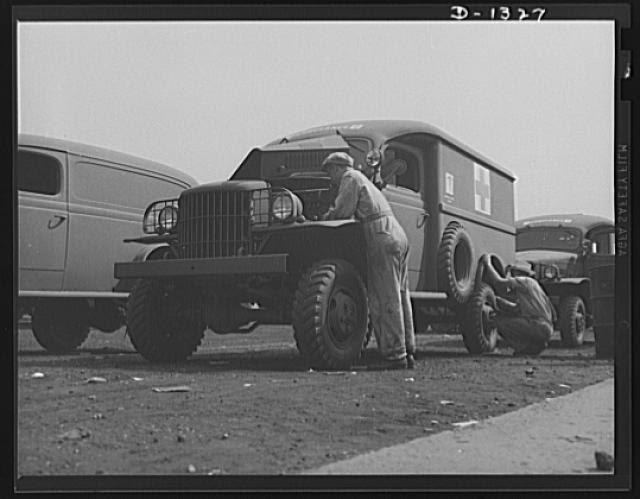
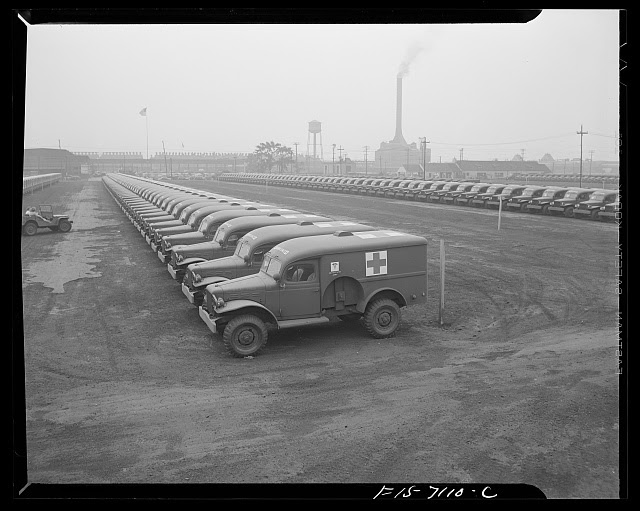
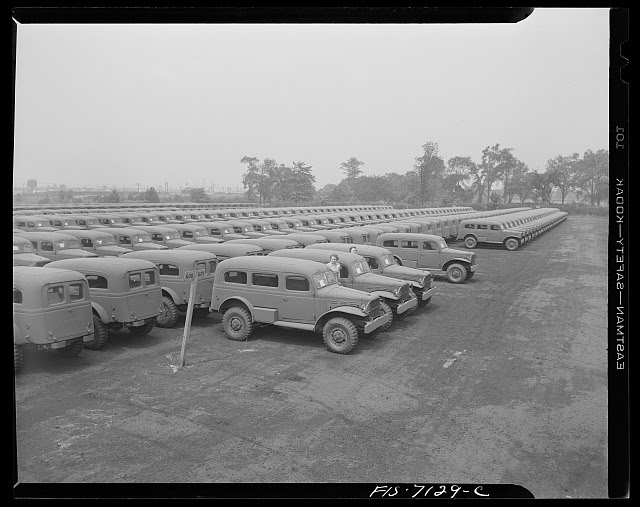


Chevrolet Blazer in use by the U.S. Army, in this case the 3d Bn, 49th FA, Wyoming Army National Guard, in South Korea. It's odd to think that this class of vehicle, which basically started off as a military vehicle, had a return, albeit a not too successful one, to military service.
Monday, May 15, 2023
Lex Anteinternet: Toyota Landcruiser: The Prime Mover of the Third World Military.
Toyota Landcruiser: The Prime Mover of the Third World Military.
Whatever that pattern is, they don't import it here. Universal (i.e., light small 4x4 trucks of the Jeep type) have gone from being a product offered solely by Willy, to being one, as I've noted before, that was offered by many manufacturers, to include Toyota, Rover, Nissan, and Ford, amongst others. Now the numbers have dwindled back down so that the only common one is the Jeep once again, now a Chrysler product, unless you include Toyota's somewhat larger option. Mercedes does make a Jeep type vehicle that's imported into the US, but you rarely see one. And I know at least Steyr makes one overseas. Jaguar, the current owner of the Rover brand, might as well.
No matter, it's Toyota that has the light military vehicle role all sewn up all over the glove. Every third world army everywhere, and every mobilized irregular guerrilla outfit, uses them too. They must be a fantastic light truck. While I know it'd be very politically incorrect, were I in the Toyota advertising department, I'd propose the slogan "Toyota Landcruiser: The prime mover of the third world army".
Sunday, May 14, 2023
Lex Anteinternet: Automotive Transportation I: Trucks and Lorries
Automotive Transportation I: Trucks and Lorries
They did not all operate exactly the same way that modern trucks do. Some did, with engine and transmission, but others were chain driven, like motorcycles were (and some still are). But as heavy as they were, they tended to be pretty prone to maintenance problems and they were, in some ways, more comparable to industrial machines than to the modern trucks we have today.
They also didn't stray much into the sticks. They didn't have the range for it, and they were too expensive for many rural users. Nonetheless, they began to come into military use just prior to World War One. The U.S. First Aero Squadron was the first fully motorized unit of the U.S. Army and saw deployment in the Punitive Expedition, where its trucks proved as great of value, if not greater, than its aircraft.


At the same time, the pickup truck very much made its appearance. At first most pickups were converted cars, with conversions of Model Ts being quite common. But as the type proved so utilitarian soon major automobile manufacturers began to offer them, and they became a staple for small businesses, farms and ranches. All were two wheel drive at this point.
Also contrary to widely held belief, the post Great War period, followed by the Twenties and the Great Depression did not see the Army supplant horses entirely by any means, but it did see the artillery branch, specifically the field artillery, take a huge interest in trucks.
Various nations artillery branches has started to use trucks as "artillery tractors" during World War One, with every major army using some. The heavier the piece, the more likely that an army was using an artillery tractor to tow it. Following World War One, the U.S. Army in particular had an enormous interest in trucks. Indeed, the artillery was arguably more interested in trucks than any other branch of the Army.
What the artillery branch found was that there really weren't any artillery tractors of the type that it wanted, and that it new could be built. Available trucks, for the most part, were two axle, two wheel drive, low geared trucks. All wheel drive trucks did start coming in during this period, but they were very heavy indeed, and mostly used for very rugged rural enterprises, such as logging. The artillery wanted a truck that was all wheel drive, but still capable of effective road use. As there wasn't such a vehicle, it set out inventing one.
And it was successful, which oddly put the Federal government, for awhile, in the truck manufacturing business. While these 6x6 artillery tractors proved to be immediately successful, they also proved to be very expensive, and in a nation with such a massive automobile industry, it soon came to be the case that nobody could see a really good reason why the Federal government should be operating a truck company, so this line of truck, during the 1930s, was contracted out as a type to various civilian manufacturers.
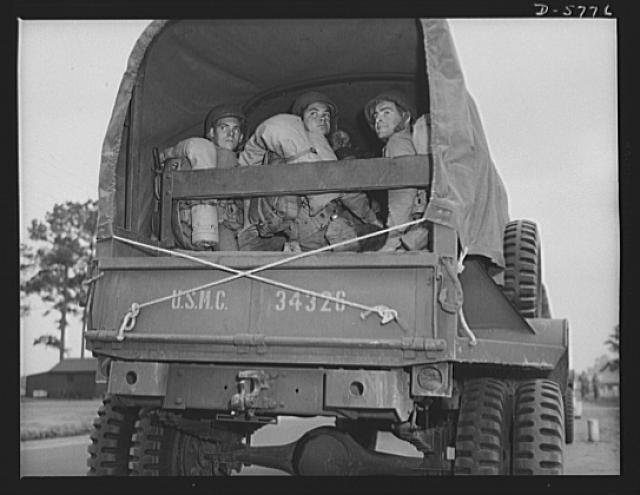
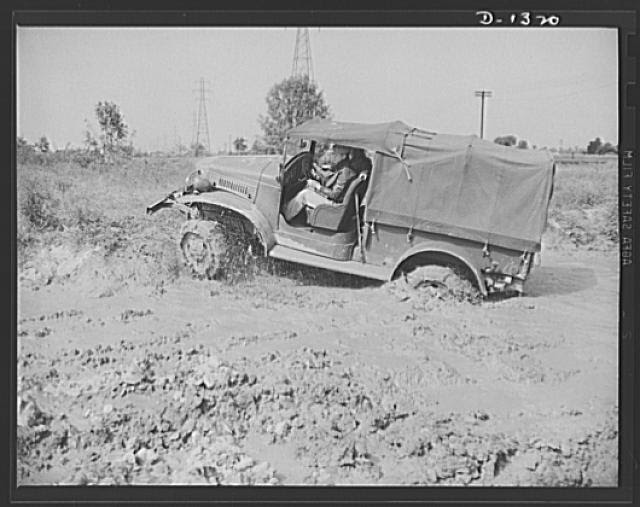
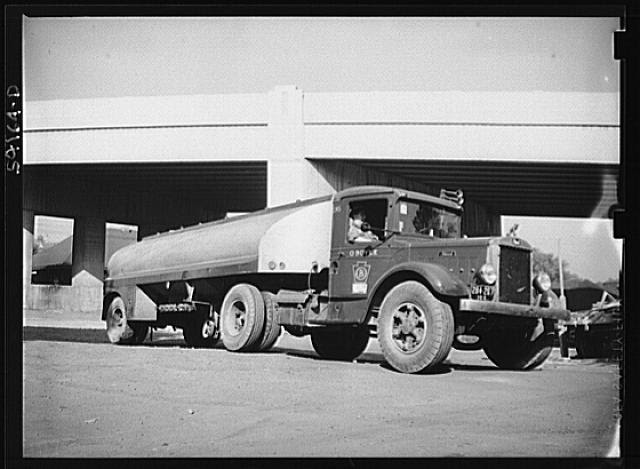
Lex Anteinternet: Friday, May 14, 1943. Victory Speed.
Friday, May 14, 1943.
The United States Public Roads Administration reported that only a few states were observing the 35 mph wartime highway "Victory Speed Limit" imposed by the Federal Government.
35mph is slow, but not quite as slow as it would now be regarded. Most cars were lower geared than they presently are, and pickup trucks were very much so. Many state highways were narrow single lane highways at the time.
Saturday, May 13, 2023
What's this blog about?
Oh no, Yeoman, not another blog.
Well, yes.
This one is dedicated to trucks, more specifically work trucks.
I've always had a thing for trucks. And by that I mean real trucks. Not the cards masquerading as trucks that are so common today.
I'm sure I picked this up as a kid.
My father always had a truck. Indeed, he always had a truck when most men of his occupation had cars, and perhaps a truck at home (most did). Most men who did what my father did, and at the time he did it they were all men, drove a car to work day by day. Not my father. He drove a truck.
I don't think my father ever actually owned a car of his own, although he co-owned there with my mother after they were married. Before my grandfather died in the late 1940s, and my father worked as a teenager at the company packing house, my father drove a packing house sedan that had been converted into a truck. It was a 1949 Chevrolet Sedan that had the bonnet removed from the truck, and a box installed.
If that doesn't sound like a truck, rest assured it is. The suspensions on late 40s and early 50s sedans were pretty truck like. I myself had a 1954 Chevrolet Sedan for many years, and I drove it fishing fairly routinely, just like you would a truck. I've owned two other cars since then, and I'd certainly not do that with them.
He had the 1949 prior to going into the Air Force and when he came back out, he bought the truck depicted above, the only new one he ever owned. He had that until some point in the 1960s. I'm told that I cried when he traded it in.
At that time, he acquired a 1965 Chevrolet Camper Special, which oddly enough was a half ton. I recall it well. A stick shift, light green truck with a white tonneau tarp, he had it for many years. I learned how to drive on it. Indeed, when I was old enough to test for my license at age 16, he had only just recently replaced it with a 1972 GMC. I can recall this as I had a hard time with the driving test as I took it on my parent's 1973 Mercury Comet, which I later owned. It was an automatic and I kept going to shift during the test, something which was emphasized by the fact that I was nervous.
I already owned a type of truck at that time, that being what the Army called a 1/4 ton utility truck or vehicle. I.e., a Jeep. Mine was a 1958 M38A1, my first vehicle.
In buying it, I acquired a 4x4, something my father had never owned. Unfortunately for me, or maybe fortunately, the engine was shot when I got it, so like the first car in the ballad Our Town, it didn't go far. It established a precedence, however. I've never been without a 4x4 since, and I've owned two more Jeeps, one of which I currently drive almost every day.
The 58 M38A1 was ultimately replaced by a 1974 F100 4x4 pickup, a light half ton. It's amazing to think that the 74 was "old" when I got it, as couldn't have been more than six or so years old in reality. It was well-used however, and I only drove it for a year or so before I traded it in, myself, for a Dodge D150, the first great truck I ever owned.
Also, a 1974, it was, as Dodge used to advertise, "job ready". Suspended more like a modern 3/4 ton, it was rough riding and tough as nails. I drove it well into college, even though by that time I already had a second truck, a 1962 Dodge W300. Ultimately, I sold it to my father, it becoming the only 4x4 truck he ever owned. He drove it until it died, and truth be known, he didn't live much longer after that. It's odd to think that he was younger than I am now when he bought it from me, and used it until both he and it really could go no further.
As you can probably tell, I've owned a lot of trucks over the years. If you stick to just pickup trucks, I've owned seven of them, of which four were half tons and the remainder one tons (or heavier). All have been 4x4s. If you include Jeeps as little trucks, which I think they are, I've owned an additional three.
I'm likely done buying them. The last one I bought that I regularly drive, I've had now almost twenty years. Petroleum vehicles are coming to an end, and at age 60, I'm also coming to an end.
But I've never gotten over my love for real trucks, and hence this blog on them.
AM Radio To Go.
Lex Anteinternet: Subsidiarity Economics. The times more or less loc...:May 13, 2023
Ford Motors will no longer put AM radio in its vehicles. Any of them. Many other manufacturers are pulling theirs from electric vehicles.
Union Pacific Hi-rail Truck.
For reasons I can't really explain, perhaps due to a fondness for all things rail, I've always thought motor vehicles adapted to r...

-
The work truck would be the one with the winch, off camera. Lex Anteinternet: Doing Everything Wrong (Be careful out there on th... : Doing ...
-
You don't often see the classic Volkswagen van in this use, but here it is.
-
Oh no, Yeoman, not another blog. Well, yes. This one is dedicated to trucks, more specifically work trucks. I've always had a thing for ...













